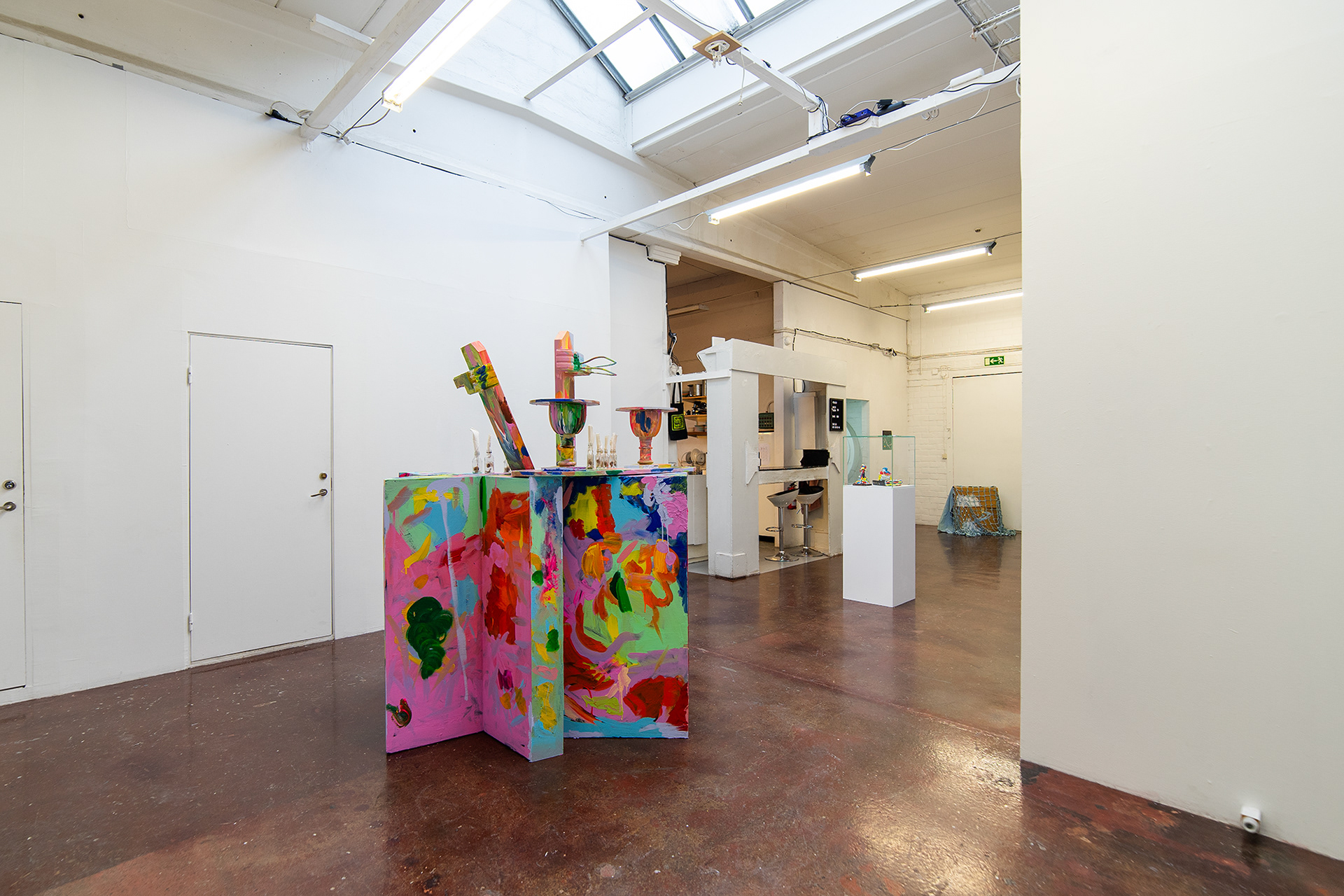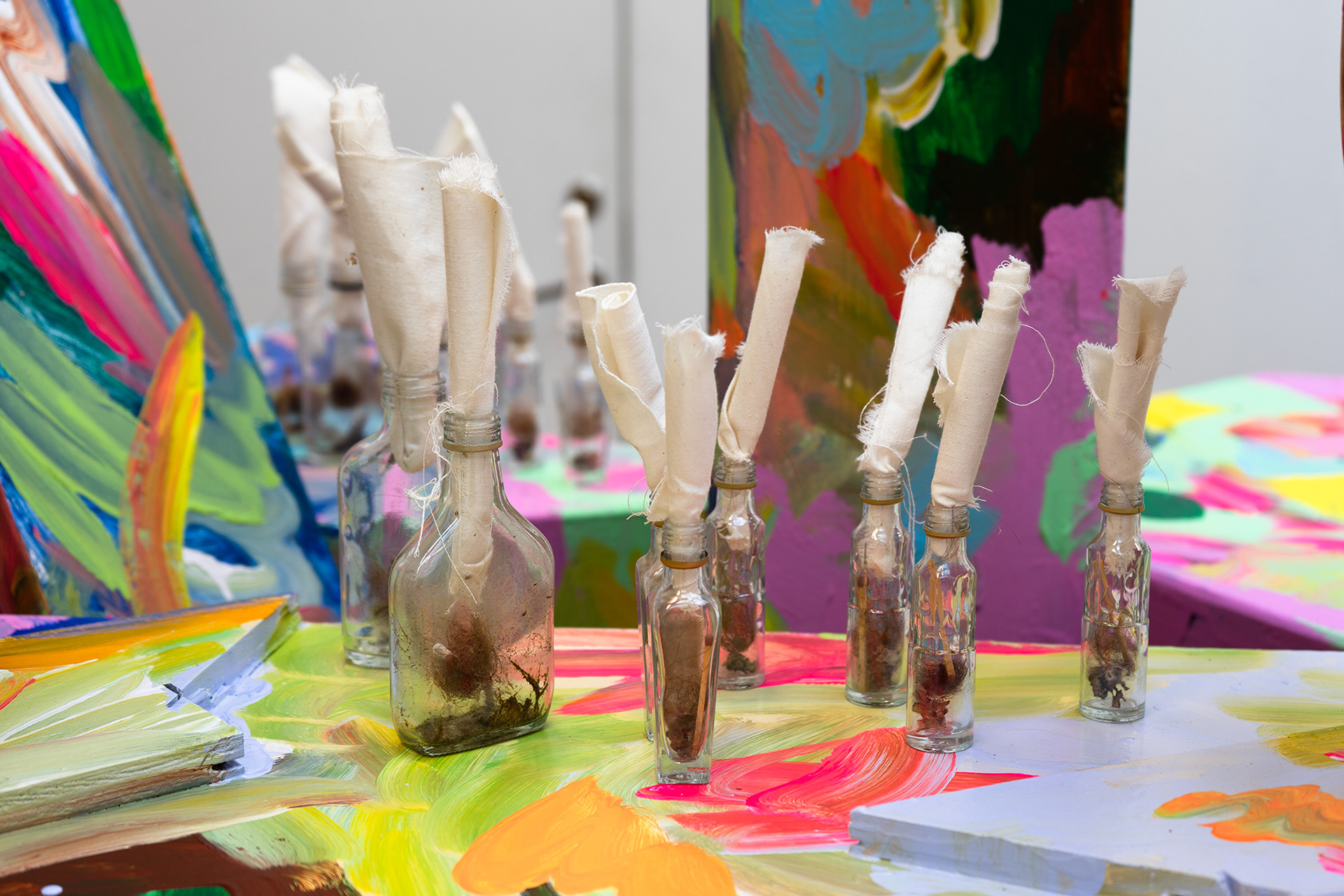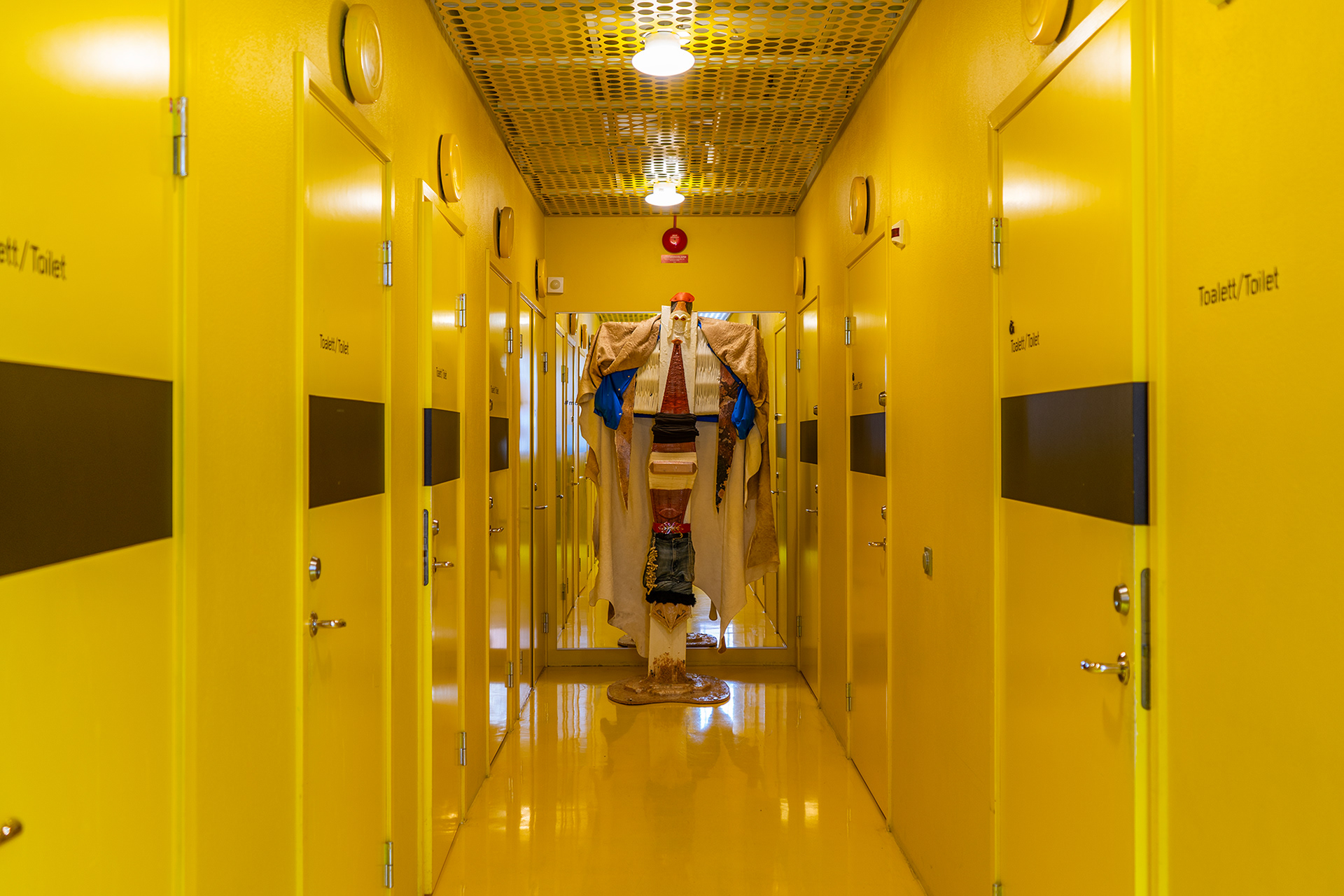WHOSE MUSEUM: WAS HERE
Retrospective bash across multiple venues
VENUES:
Celsius Projects
Moderna Museet Malmö
Deseo Tattoo Studio
August 23 – September 8, 2024
Malmö Konstmuseum
Malmö stadsarkiv
Whose Museum
BienVélo Bike Shop
August 23 – September 29, 2024
Consider for a moment that a museum is a living organism, their collections forming a body whose relationships compel them to move and to act. Who will they become?
With this exhibition, the international art collective Whose Museum presents its first retrospective in Sweden. After half a decade of community-oriented, experimental art practice and a cross-disciplinary program in its Möllan gallery space, Whose Museum’s activities in the city of Malmö culminate in this major solo exhibition, inviting the public to get to know a part of its identity that is often hidden: Whose Museum itself is a monumental artwork. It extends the boundaries of our understanding of what art is and can be. In this show, the collective has worked to connect local museums, archives, artist-run spaces and shops in a meaningful narrative. As part of the retrospective, Whose Museum’s gallery space itself is on view during the entire exhibition period while its contents have found their way to new sites.
Whose Museum works with the participatory collecting of everyday objects, alternative conservation and archiving as an artistic practice. The premise of the museum is simple: any one can donate anything to the collection.* The items range from the banal to the bizarre, including drawings, discarded objects, prosthetic body parts, plants, songs and ephemera. At Malmö stadsarkiv, Anna M. Szaflarski’s sci-fi graphic novel The Band (2022) compels viewers to dive into Whose Museum’s earliest history, when, in 2008, the band Collapsing Opposites started the collection on a cross-Canada tour.
At Celsius Projects, a selection of works made by members of the collective are presented. They draw upon the museum’s history and collection in a painterly and joyful display of the unprofessional and ornamental bureaucracy that define the collective’s ethos. Visitors are greeted by the original sketch for Whose Museum’s window sign, produced when KRETS gallery extended the invitation to Whose Museum to host a year of exhibitions in Malmö in 2019, which led to the collective taking over the space.
The furniture from Whose Museum’s gallery space, used during all of the exhibitions in the past five years and redesigned by various artists in the process, is now transformed into a sculptural installation. It holds stink bombs by artist Alanna Lynch, whose work Hauntings of the Spoils was made for one of the first exhibitions in 2019. This work and other remnants from the gallery have found their way into the sculpture as traces of collective experience.
Copies of donation forms from Whose Museum’s early years cover an entire wall, overlaid with paintings depicting parts of the collection. Whose Museum Still Life, a painting of the Orca, Pichu and Camel figurines, was commissioned from the artist Monique Motut-Firth in 2010. At various events over the years, participants have interpreted collection items in drawings and paintings, also adding them to the museum. In keeping with the sentiment of tedious archiving, an empty donation form with the phrase “I hate forms!” written across it is blown up to an exaggerated size. This work on paper was donated to the museum at a collecting event.
In order to keep the objects’ narratives going, the museum decided to allow for changes, from loss and decay to objects being used and reworked into new pieces. Objects in the collection may be altered, given the appropriate paperwork is filled out. Altered works are considered a form of conservation at Whose Museum that is contrary to museums’ typical obsessions with physical posterity. Artists’ museums are able to try out new methods to see what comes of them and allow for material agency. At Celsius Projects, a series of altered works by artist Patrick Cruz is presented in a vitrine, made from plaster and paint on items in the collection in 2010.
When any one can donate anything to your collection, you get some surprises. After a tablet of MDMA was donated in Canada and the collection was about to be shipped off to Europe, the decision was made to alter the ecstasy into a painting. It was dissolved and used in Whose Museum’s Colour Checker Chart (2010). Here, the work is shown next to a painting of an oversized text label and hung on a grey backdrop, borrowing from the tools of museology.
In the social area of Moderna Museet Malmö, a sculpture by Max Ockborn can be visited. The sculpture was in residence at the gallery space of Whose Museum from 2019 to 2024 and was donated to the collection. It is now on loan to Moderna Museet where it wishes to continue its social relations with the staff, visitors and artworks.
The Whose Museum collection holds three cacti. One is on a long-term loan to an associate in the USA who sends regular updates, another has died and the third one is now at a local shop in Malmö, BienVélo, where the cactus is watching the bike mechanics at work.
At Malmö Konstmuseum, a large number of objects from Whose Museum’s collection have found their way into a constellation that has facilitated social interactions throughout Whose Museum’s history: the Collection Body (2008-2024). At the entrance to the newly installed collections of the Konstmuseum, the work sprawls across the floor and invites visitors to consider hierarchies produced by museums and their collecting.
Several events are part of the retrospective, including a tattoo flash day at Deseo Tattoo Studio where one can encounter a selection of works on paper from Whose Museum while getting tattoos of collection items.
Skånes konstförening hosts an artist talk by Alanna Lynch whose stink bombs have resided at Whose Museum since 2019.
Whose Museum hosts a drag noise show by The Evacuation Ensemble, and, together with the local food-art initiative Konstitori, Patrick Cruz and Sahar Alkhateeb prepare a feast.
Spread out across venues, the exhibition highlights the interconnectedness of various types of art spaces in the city; how they are conditioned and worked upon by the state, commerce and funding, but also by relations between people, objects and stories.
The retrospective marks the end of Whose Museum’s activities in its Malmö gallery. The past five years have allowed a local community to grow who will now take over the space while Whose Museum takes new steps. In Malmö, it has done what it came for and is ready to transition.
*Please note: Whose Museum is currently not accepting any new donations to the collection
EVENTS:
Opening: August 23, 18:00-21:00, Celsius Projects
Artist talk with Alanna Lynch: August 24, 13:00, Skånes konstförening
Tattoo Flash day from Whose Museum's collection: August 25, 13:00-18:00, Deseo Tattoo Studio
Konstitori with Patrick Cruz and Sahar Alkhateeb: September 4, 18:00-20:00, Whose Museum
The Evacuation Ensemble, drag noise concert: September 7, 20:00, Whose Museum
Funded by Malmö Stad, Region Skåne, Kulturrådet

Celsius Projects

Celsius Projects

Celsius Projects

Celsius Projects

Celsius Projects

Celsius Projects

Celsius Projects

Celsius Projects

Celsius Projects

Celsius Projects

Celsius Projects

Celsius Projects

Celsius Projects

Celsius Projects

Celsius Projects

Celsius Projects

Whose Museum

Whose Museum

Whose Museum

Malmö Konstmuseum

Malmö Konstmuseum

Malmö Konstmuseum

Malmö Konstmuseum

Moderna Museet

Moderna Museet

Moderna Museet

Deseo Tattoo Studio

Bien Velo Bike Shop

Malmö stadsarkiv
Images by Lena Bergendahl
